The Art of Living amphitheater in Bengaluru recently became the stage for an extraordinary artistic confluence of history, spirituality, and nature. With the blessings of Guru Sri Sri Ravi Shankar Ji, Sapta Sindhu—a grand dance production—unfolded as a vivid homage to the sacred rivers of India, drawing upon the ancient verses of the Rigveda and the deep spiritual reverence these rivers have inspired in the hearts of the people of Bharat. What made this production unique was not only its artistic grandeur but also its educational essence, as it brought to life the geographical and spiritual significance of rivers like Saraswati, Sindhu, and Sutudri through the beauty of classical dance. This spellbinding performance, witnessed by an audience of nearly 10,000, wove together two of India’s most revered classical dance forms—Bharatanatyam and Odissi—creating a timeless symphony of movement, emotion, and devotion.
A Dance of Divine Waters: Concept and Inspiration
At its heart, Sapta Sindhu was an ode to the seven sacred rivers that have flowed through India since time immemorial, not only shaping its landscape but also nurturing its civilizations and spiritual heritage. These rivers, sung about in the Rigveda, are more than just physical entities; they are symbols of life, continuity, and divine grace. Sapta Sindhu captured the essence of these rivers, transforming their significance into an exquisite form of storytelling through dance. Drawing on the concept of Natya Veda—the Vedic scripture of dance and drama—the performance translated the hymns of praise for these rivers into intricate gestures, movements, and expressions. The dancers became living embodiments of the rivers, flowing across the stage like water, imbuing the performance with both grace and power.
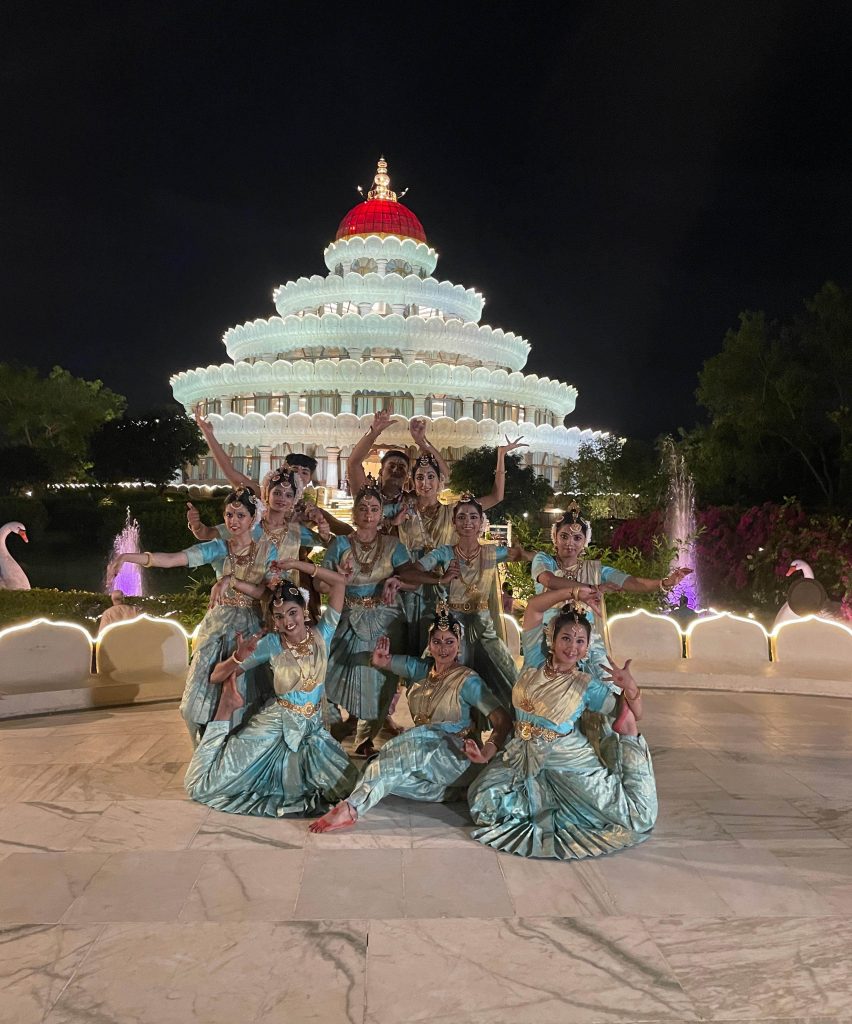
This was not merely a visual portrayal of rivers, but a celebration of how they have shaped the ethos of the land. By blending the intricate and expressive movements of Bharatanatyam and Odissi, the production highlighted the diversity of Indian classical dance. These two ancient forms, each with its own distinct style and expression, were brought together in a harmonious jugalbandi, symbolizing the merging of various streams of thought, philosophy, and tradition—just as rivers converge and flow into one another. The choreography depicted the rivers’ journey from the heavens to the earth, their nurturing presence, and their ability to bring life and prosperity to the lands they touch.
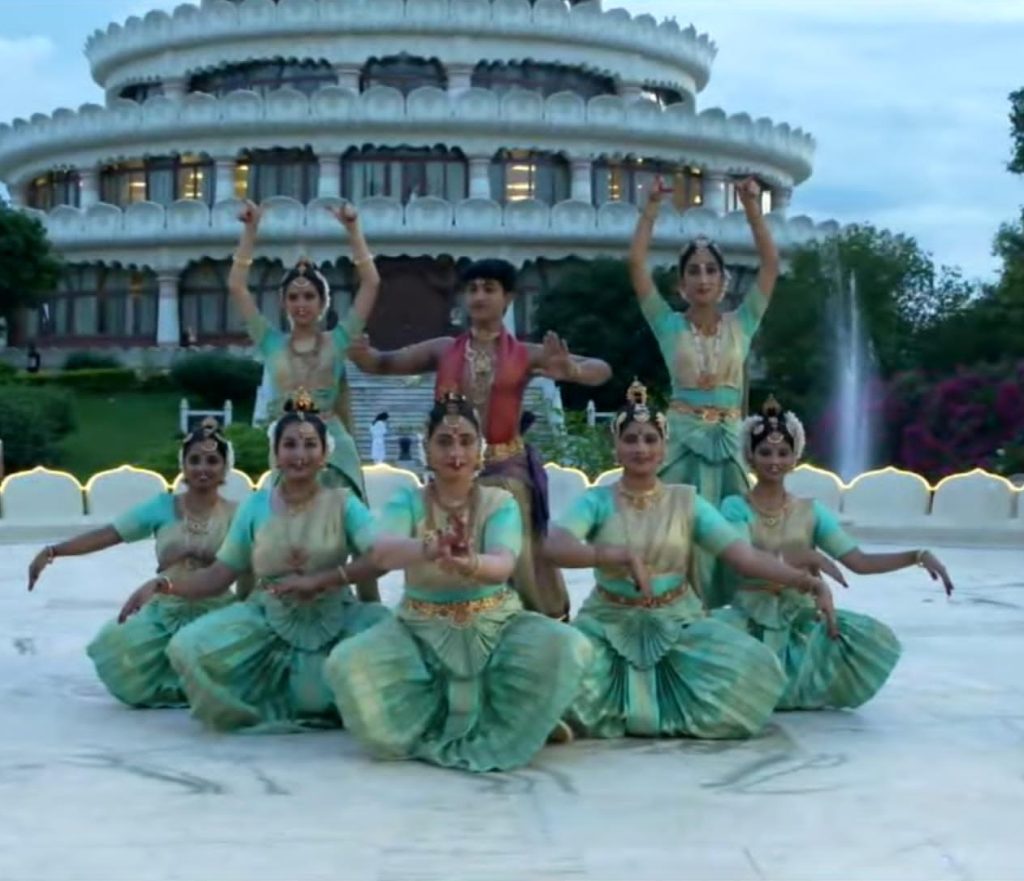
Blending Traditions: A Choreographic Triumph in Sapta Sindhu’s Dual Dance Forms
One of the most remarkable aspects of Sapta Sindhu was the seamless collaboration between two celebrated dance gurus—Dr. Guru Meenakshi Shriyan and Guru Asha Nambiar. Together, they brought to life a choreographic masterpiece that united the distinct styles of Bharatanatyam and Odissi in a single narrative. Dr. Meenakshi, a torchbearer of the 65-year legacy of Arunodaya Kala Niketan, infused the performance with the precision and dynamism of Bharatanatyam, while Guru Asha Nambiar’s Odissi expertise added a lyrical softness to the composition. The result was a beautiful and harmonious blend of two art forms that are deeply rooted in India’s cultural heritage.
The choreography took the audience on a journey through time and geography, paying tribute to the sacred rivers and the civilizations that have flourished along their banks. Each movement was imbued with the essence of water—at times calm and graceful, and at other times powerful and forceful. The dancers, through their fluid movements and powerful expressions, embodied the god of rain, Varuna, as well as the deities and mythical stories associated with the rivers. This artistic representation of both the spiritual and geographical importance of the rivers made the performance not only visually stunning but deeply meaningful.
One of the standout moments of the performance was the jugalbandi, or duet, between the two dance forms. Bharatanatyam and Odissi dancers performed together, symbolizing the confluence of rivers. The synergy between the dancers was impeccable, showcasing not only the beauty and complexity of each form but also highlighting their shared roots in Indian culture. It was a moment where art transcended form, and the dancers’ movements flowed together like rivers merging into a single, powerful stream.
A Natural Stage: The Setting and Atmosphere
The amphitheater at The Art of Living, nestled in the natural beauty of Bengaluru, provided the perfect setting for this divine performance. The open-air stage, surrounded by the elements of nature, enhanced the visual and emotional impact of the performance. As the dancers moved gracefully across the stage, the natural surroundings—clear skies, gentle breezes, and the lush greenery—seemed to merge with the performance, creating a truly immersive experience. The setting became a silent, yet powerful partner in the production, its beauty blending with the costumes, expressions, and movements of the dancers.
In many ways, nature itself became an additional character in the performance, amplifying the themes of the rivers and their connection to the earth and the divine. The vibrant colors of the costumes, the intricate footwork, and the expressive storytelling all harmonized with the backdrop, creating a visual treat for the audience. The live performance was also broadcast internationally, allowing audiences from around the world to experience this cultural celebration, further cementing Sapta Sindhu as a production of global significance.
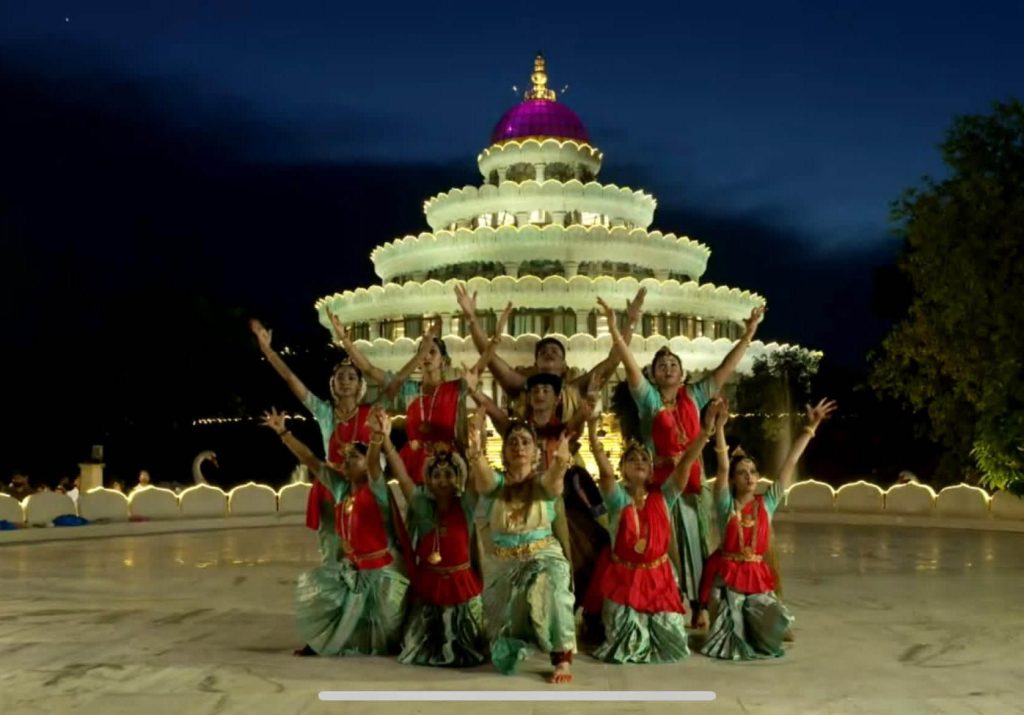 A Silent and Enthralled Audience
A Silent and Enthralled Audience
As the performance unfolded, the energy in the amphitheater reached a crescendo. With each new chapter of the narrative, another river was brought to life, and the audience, filling the amphitheater to its capacity, sat in rapt attention. The beauty and grace of the dancers captivated everyone present, and a profound silence filled the air—a silence born of awe and reverence for the artistry on display. Each movement, each expression, resonated deeply with the audience, creating an atmosphere charged with divine energy. As the final notes of the performance echoed through the amphitheater, the audience erupted in applause, a heartfelt appreciation for the skill, creativity, and emotional depth of the production.
The Legacy Continues: Honoring the Artists
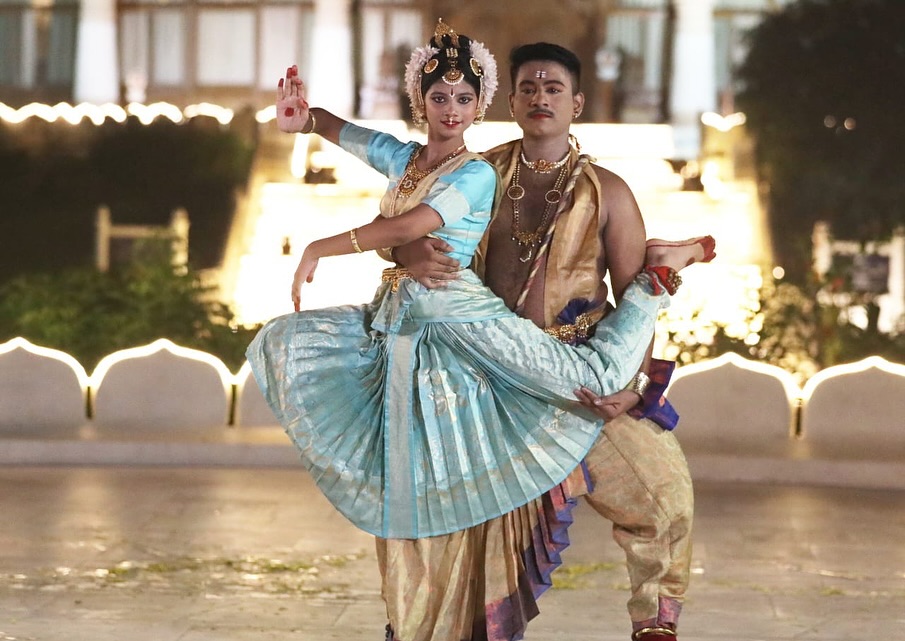
After the performance, the dancers were honored by none other than Guru Sri Sri Ravi Shankar Ji, whose blessings added a spiritual gravitas to the event. His words of appreciation and the visible joy on the faces of the performers reflected the immense impact Sapta Sindhu had on all those who witnessed it. The dancers, visibly moved by the audience’s response, were humbled by the overwhelming admiration and expressed gratitude for the opportunity to perform such a meaningful production. Many in the audience expressed their desire to witness the performance again, a testament to the lasting impression Sapta Sindhu left on everyone.
The volunteers, organizers, and coordinators of The Art of Living also received well-deserved appreciation for their meticulous planning and execution. From the logistics for the dancers to ensuring the comfort of the audience, every detail was thoughtfully managed, resulting in a flawless production that left no stone unturned.
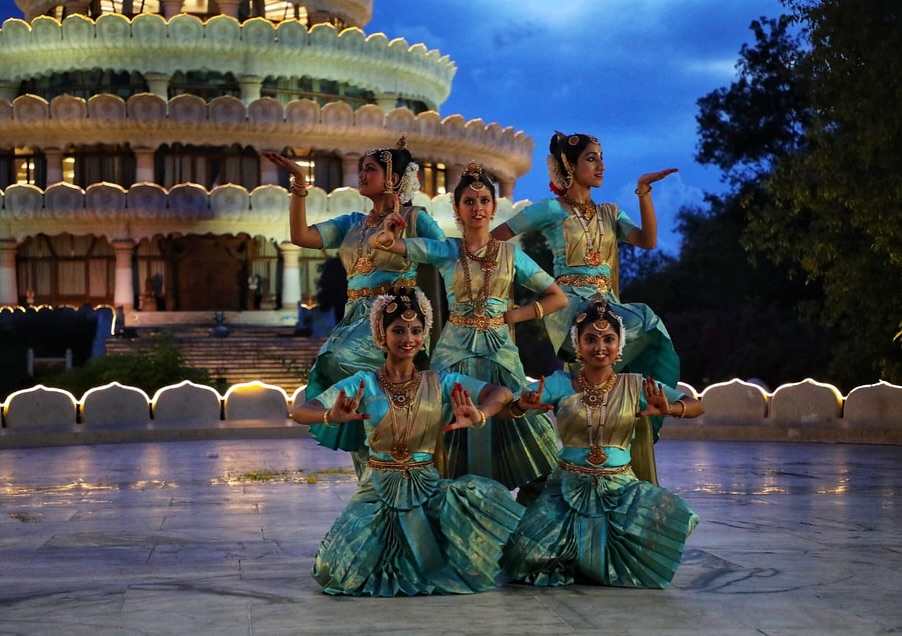 A Legacy of Cultural Education
A Legacy of Cultural Education
For Dr. Guru Meenakshi Shriyan, Sapta Sindhu was not just an artistic endeavor but a continuation of the legacy of her father, Late Vidwan Guru M.N. Suvarna Ji, and the institution he founded, Arunodaya Kala Niketan. Under her leadership, this renowned institution has nurtured students in the arts for decades, and this production was a proud moment in the institution’s 65-year history. Sapta Sindhu was not only a tribute to India’s ancient rivers but also a testament to the power of art in preserving and promoting India’s rich cultural heritage. The production symbolized both a journey through India’s sacred geography and the journey of a legacy that continues to inspire and educate.
In every way, Sapta Sindhu was a celebration of India’s ancient past, its sacred rivers, and the timeless beauty of its classical arts. The dancers, the rivers they portrayed, and the spirit of Bharat flowed together, creating a mesmerizing and unforgettable experience for all who were fortunate enough to witness it.

